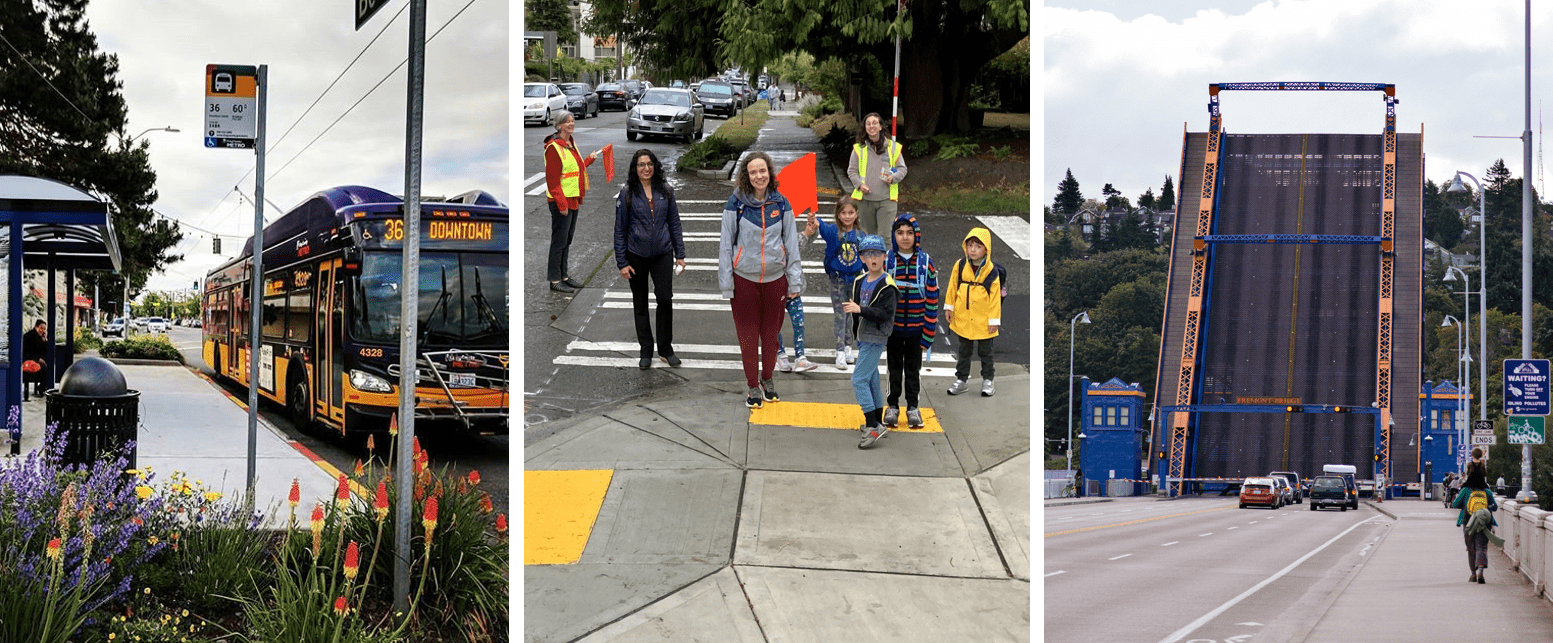 Mayor Harrell’s draft Transportation Levy Proposal would fund SDOT to maintain and modernize Seattle’s transportation system, deliver major projects, and support better, safer connections in neighborhoods throughout the city. Photos: SDOT
Mayor Harrell’s draft Transportation Levy Proposal would fund SDOT to maintain and modernize Seattle’s transportation system, deliver major projects, and support better, safer connections in neighborhoods throughout the city. Photos: SDOT Blog stats: 2,200 words | 11-minute read
At-a-glance:
- Today Mayor Harrell unveiled an 8-year, $1.35 billion transportation levy proposal draft for public input, surrounded by community and agency partners in Rainier Beach. His vision for the levy is a ‘safe, reliable, connected’ Seattle.
- The proposal recommends more funding to repair bridges, repave streets, connect neighborhoods to light rail, build sidewalks, and make getting around Seattle safer.
- Levy renewal is a top priority for the Mayor as the current Levy to Move Seattle funds roughly 30 percent of SDOT’s work and expires this year. Transportation levies have funded basic transportation services for 18 years based on public votes.
- The Mayor’s proposal is a draft for public input. Residents and community members may visit the engagement hub to read the proposal and share feedback by April 26.
- In May, the Mayor will share his final proposal with the Seattle City Council. This summer, the City Council will review the proposal and consider referral to voters.
Proposed funding would invest in maintenance and modernization of public infrastructure
Seattle’s transportation system is critical to a thriving city that connects people to places and opportunities. Our current transportation levy provides roughly 30% of SDOT’s annual budget and expires this year. Levy funding allows us to attend to the basics of our city’s transportation infrastructure while providing important investments for our safety, our climate, and our communities.
Mayor Harrell today unveiled his transportation levy proposal draft for public input. It builds on important plans that you and your neighbors shaped, including the Seattle Transportation Plan and the One Seattle Plan (currently available for public comment).
“Seattle residents want a transportation system that is safe, connected, and well-maintained. This levy proposal will deliver more funding to get us there. No matter how you get around, it will make trips safer, more reliable, and better connected so that every Seattleite is set up for success when they experience our city. This is a top priority and will allow our transportation department to keep taking care of the essentials, be proactive stewards of our public assets, and keep the city working for you. We welcome your continued feedback and input – thank you.” – Seattle Mayor Bruce Harrell
“The Mayor’s levy proposal offers a balanced and practical set of investments to maintain and modernize our streets and bridges. Informed by the Seattle Transportation Plan, our Asset Management Strategy, and our strengthened Vision Zero program, this major program of investments will produce a safer, better connected and more reliable transportation system for all.” – Greg Spotts, Director, Seattle Department of Transportation
The proposal includes the total levy size, spending amounts for each SDOT program, and details about the major capital project candidates.
Proposed program spending
- $423M to Repave and improve streets that carry the most buses, trucks, and cars, and make it safer for everyone to walk, roll, bike, and ride transit.
- $218M to Keep bridges in good and reliable working condition and prepare for future bridge projects.
- $121M to Connect people safely to transit hubs, including Link light rail stations; improve bus stops; and reduce delays on bus routes.
- $109M to Build and repair sidewalks, crossings, and curb ramps so people walking and rolling can safely get to where they need to go.
- $107M to Reduce traffic collisions, severe injuries, and fatalities through targeted improvements to streets, sidewalks, intersections, paths, and crossings.
- $100M to Install new and maintain and upgrade traffic signals for safe, reliable movement; improve pedestrian and bike accessibility; and support traffic operations during large events and for trips in and out of the port.
- $94M to Expand Seattle’s protected bike lane network; connect schools to bike lanes, paths, and neighborhood greenways; and maintain and upgrade existing bike lanes.
- $57M to Make public spaces more inviting and improve lighting so people can enjoy unique and vibrant neighborhoods and business districts.
- $49M to Address climate change directly, reducing air pollution and making sustainable transportation options more available.
- $48M to Build projects that are co-created with community, focusing on neighborhoods with historical underinvestment.
- $25M to Make freight improvements to support trucks delivering goods and providing services.
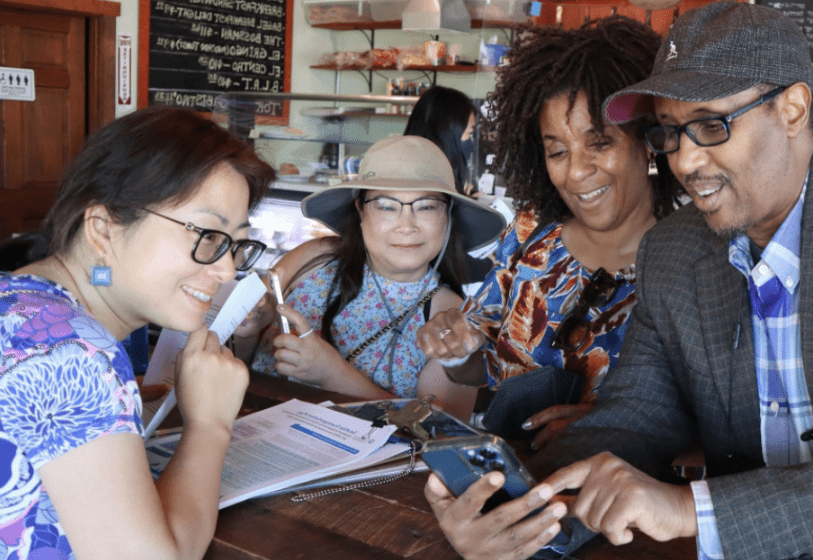
Features of the proposal
- Increasing funding for our Vision Zero program using a Safe System approach.
- Supporting construction of 250 blocks of new sidewalks.
- Installing head-start pedestrian walk signals at 280 intersections.
- Contributing to 10,000 new ADA-accessible curb ramps.
- Implementing safety projects on 12 or more corridors that have the highest number of crashes.
- Upgrading 30% of existing protected bike lanes with better barriers.
- Creating or expanding 5 or more neighborhood greenways.
- Improving walking and biking connections and lighting to public schools and light rail stations.
- Improving the bike network by increasing protection, enhancing maintenance, and closing gaps.
- Launching a new preventative bridge maintenance program to make the right treatments at the right time and extend the life of our bridges by decades.
- Repaving and reconstructing 38% of the busiest blocks where streets are in poor condition.
- Repairing 20% of major truck streets in poor condition.
- Upgrading mechanical systems to keep our moveable Ship Canal bridges working reliably.
- Repairing 34,000 urgent sidewalk defects and replacing sidewalks.
- Repaving at least 15 of our busiest streets, improving them for people to walk, roll, bike, and take transit.
- Updating signal timing on 40 corridors.
- Installing new traffic signals that improve flow and safety for people and goods.
- Making improvements on 5 of the most delayed transit routes.
- Upgrading 2 busy bus routes in equity priority areas.
- Adding 2 east-west transit corridors providing access to light rail stations.
- Building 160 projects that improve transit reliability, equity, and safety.
- Partnering with community to support electric vehicle charging options and low-pollution neighborhoods.
- Expanding the Neighborhood Street Fund to build projects requested by communities.
- Expanding tree canopy cover and tree species diversity.
- Improving public spaces and pedestrian lighting so people can walk, play, and enjoy outdoor activities safely.
- Investing in maintenance, lighting, wayfinding, and activation to support Downtown revitalization.
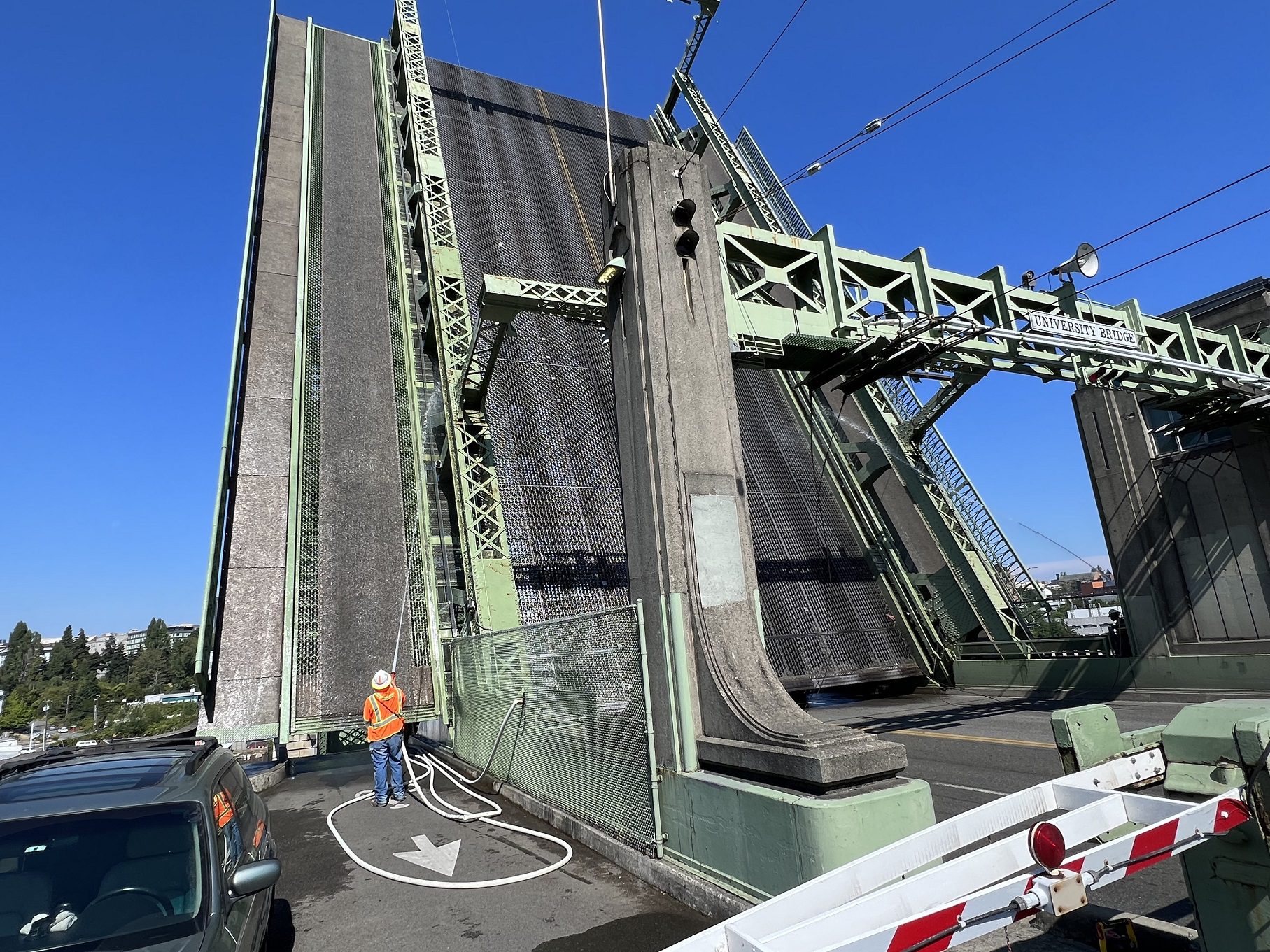
Major street maintenance candidate projects
Please note that these projects are not yet designed. The descriptions below illustrate potential improvements.
- N 130th St: 1st Ave NW to I-5 — Paving with a safety redesign to better connect people to the future 130th St Station. Includes protected bike lanes, crossing improvements, trees, sidewalk reconstruction, and transit priority.
- 15th Ave NE / Pinehurst Way NE / Roosevelt Way: NE 92nd St to NE 145th St — Paving with redesign for safer speeds, including upgraded and expanded protected bike lanes and bus stops, pedestrian lighting, sidewalks, and crossings.
- NE 65th St: 2nd Ave NE to 35th Ave NE — Paving with upgraded protected bike lanes, bus stops, and accessible connections to Roosevelt Station. Includes sidewalk repairs, crossing improvements, extended protected bike lanes, and trees.
- NW Market St: 15th Ave NW to 24th Ave NW — Street reconstruction to make existing street designs safer for all travelers and upgrade sidewalks, crossings, and bike connections.
- 23rd Ave E / 24th Ave E: E John St to E Lake Washington Blvd — Reconstruction and paving, including a corridor safety analysis, additional transit investment, and crossing improvements, sidewalk repair, and neighborhood greenway upgrades.
- South Lake Union East-West Transit Connections — Transit project to make east-west bus travel more reliable, with connections to the future South Lake Union Station. Includes a proposed new corridor on Harrison St / Mercer St from Fairview Ave N to Queen Anne Ave N, and continued evaluation of the Route 8 with our transportation agency partners.
- Elliott Ave / Western Ave: Bell St to Thomas St — Paving with upgraded bike lanes, sidewalk repair, and safety upgrades.
- James St: 3rd Ave to Broadway — Street reconstruction to support high-volume traffic and bus service. Includes upgrades to sidewalks and traffic signals, pedestrian safety redesigns, and landscaping and trees.
- (Rt 7) Rainier Ave S: S Walden St to S Jackson St — Street reconstruction and paving to support RapidRide R Line. Includes bus lanes, improved crossings, sidewalk expansion and repair, trees, pedestrian lighting, safety updates, better access to the Judkins Park Station, and evaluation of protected bike lanes.
- (Rt 36) Beacon Ave S: 14th Ave S to 39th Ave S / 12th Ave S & 14th Ave S: Jose Rizal Bridge to Beacon Ave S — Street redesign for more reliable Route 36 service and to extend protected bike lanes and trails. Includes paving, sidewalk repairs, and crossing improvements to improve safety and accessibility.
- Fauntleroy Way SW — Paving to keep roadway functional during light rail station construction and support future improvements.
- 35th Ave SW: SW Morgan St to SW Alaska St — Street reconstruction with a corridor safety analysis and evaluation of transit improvements. Includes sidewalk repair, crossing improvements, and evaluation of bike routes.
- S Albro Pl, Corson Ave S, and Ellis Ave S: East Marginal Way S to I-5 — Project to preserve pavement and improve crossings, repair sidewalks, enhance the pedestrian environment, and evaluate safety and transit improvements.
- East Marginal Way S: 1st Ave S to 16th Ave S — Project will leverage grant funding to restore pavement, evaluate safety improvements, and make sidewalk repairs and small upgrades to transit.
- Olson Pl SW / 1st Ave S: 2nd Ave SW to SW Cloverdale St — Street reconstruction with a widened sidewalk or trail and treatments to keep vehicles from skidding on wet pavement.
- S Henderson St: MLK Jr Way S to Seward Park Ave S — Street reconstruction to support RapidRide R Line and better connect the Rainier Beach Station with the community, schools, and Be’er Sheva Park. Includes protected bike lanes, crossing improvements, and sidewalk repair, as well as elements from the Recreating Henderson Street plan.
- Aurora Ave Project — Develop a new design vision for the Aurora Ave N corridor that enhances safety, mobility, and accessibility for all travelers.
- SW Alaska St — Design underway to create a transit connection along SW Alaska St to the future Alaska Junction Station. Protected bicycle lanes and widened sidewalks are expected to be part of the design.
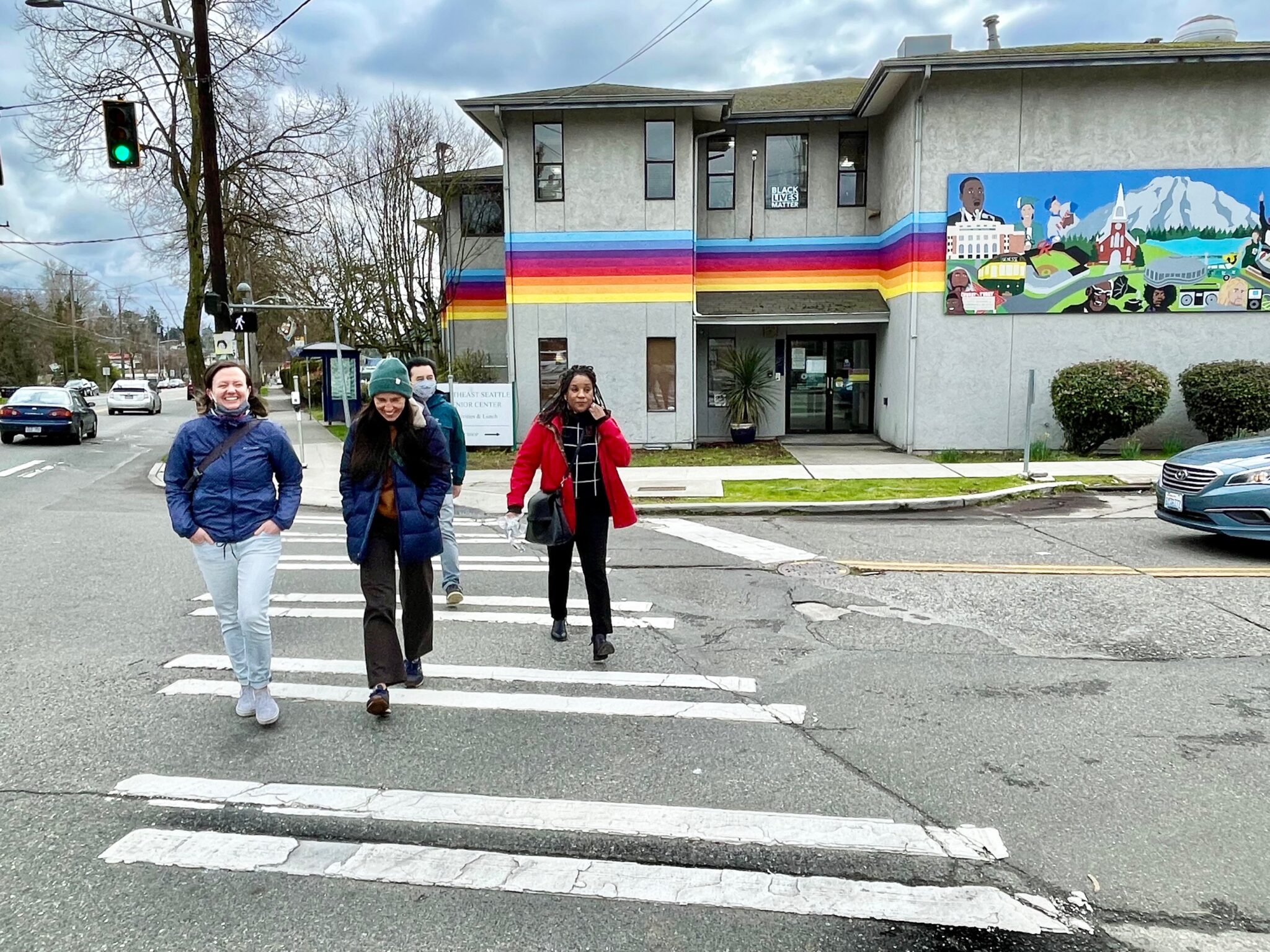
Cost to Seattle homeowners
- Levies are paid for by Seattle property owners. Under the expiring Levy to Move Seattle, the median assessed value Seattle homeowner pays about $24 per month.
- This levy proposal would increase the monthly cost by $14 per month for a $1 million home, by $12 per month for a $866,000 home (median Seattle assessment), and by $7 per month for a $500,000 home.
Providing input on the Mayor’s draft proposal
- Please visit the engagement hub by April 26 to tell us what you think about the proposal. We appreciate your time and the perspectives you share.
The engagement hub is available in more languages, including Spanish, Chinese (Traditional), Korean, Amharic, Somali, Tagalog, and Vietnamese, via the links below:
- Visite el centro de participación
- 造訪活動中心
- 참여 허브 방문하기
- የተሳትፎመገናኛን ይጎብኙ
- Booqo Xarunta Ka Qeybgalinta
- Bisitahin ang Hub ng Pakikipag-ugnayan
- Truy Cập Trung Tâm Tương Tác
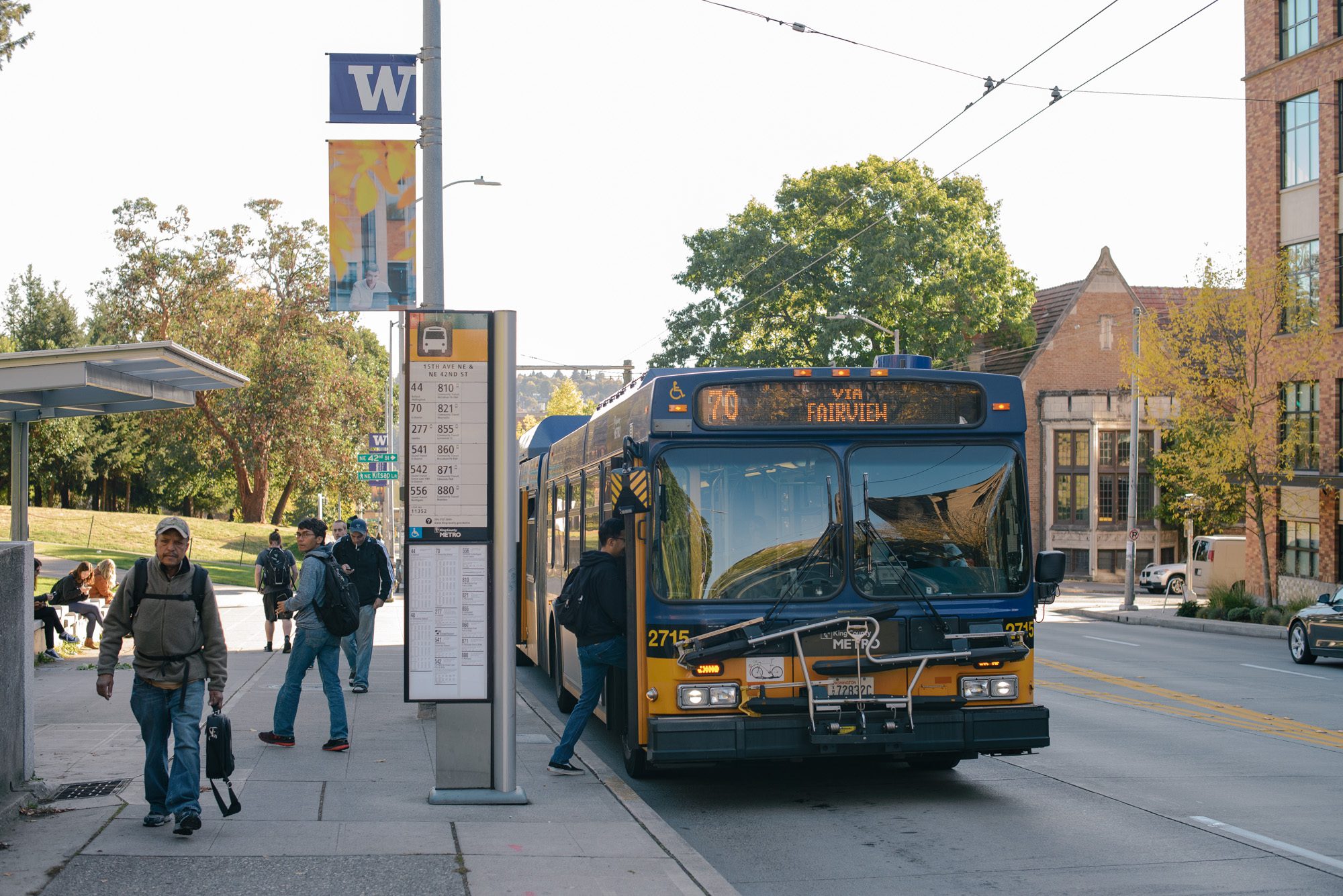
Thank you for your time, interest, and participation on this important topic.
What people are saying:
“Transit links people to jobs, housing, and all the opportunities the Seattle area has to offer. With investments that make it easier and safer for more people to use transit, the City is a key partner with Sound Transit in helping to create a more connected, more productive region for all of us.” – Goran Sparrman, Sound Transit Interim CEO
“Working Seattleites don’t need studies or fancy PowerPoints to convince us that our roads, bridges and sidewalks are in bad shape. We live it every day. Fortunately, traffic is not like the weather. We can improve our commute times, prevent tragedies like what recently happened in Baltimore and help kids get to school safely on foot. Working people in our region are willing and eager to do our part to address our woefully inadequate transportation infrastructure. We look forward to reviewing the mayor’s draft levy plan and advocating for substantial improvements to Seattle’s biggest nuisance.” – Katie Garrow, Executive Secretary-Treasurer, MLK Labor
“The people of Seattle deserve an investment in transportation that addresses the City’s most pressing safety, equity, and climate needs. As the largest levy in our history, this proposal is a big commitment to rise up and meet them. We’re excited to see investments in transit that will speed up buses and help more people access light rail. We look forward to working with the Mayor, Council, and advocates to strengthen this levy so that everyone in Seattle can walk, bike, roll, and take transit to get where they need to go.” – Kirk Hovenkotter, Executive Director, Transportation Choices Coalition